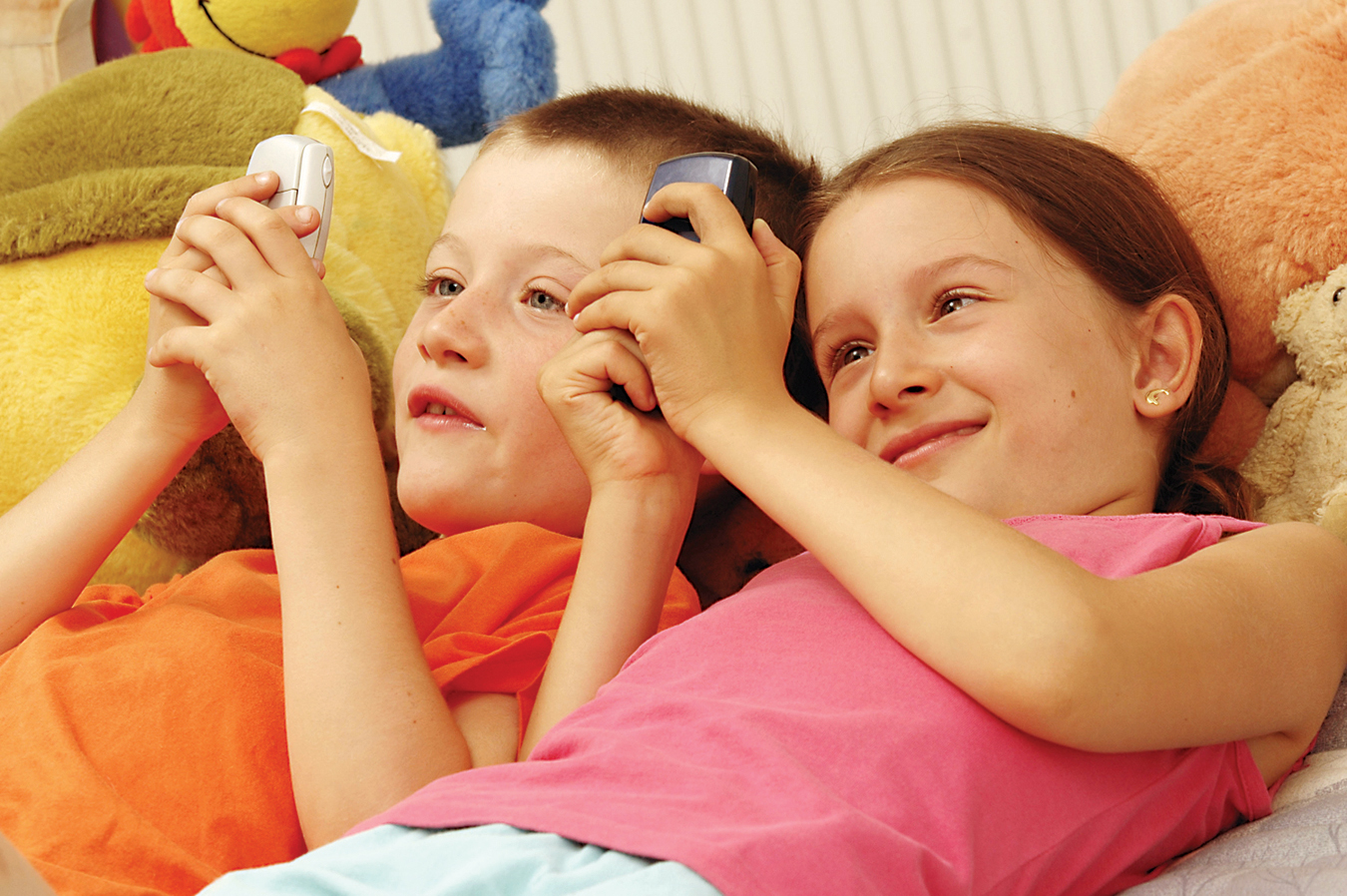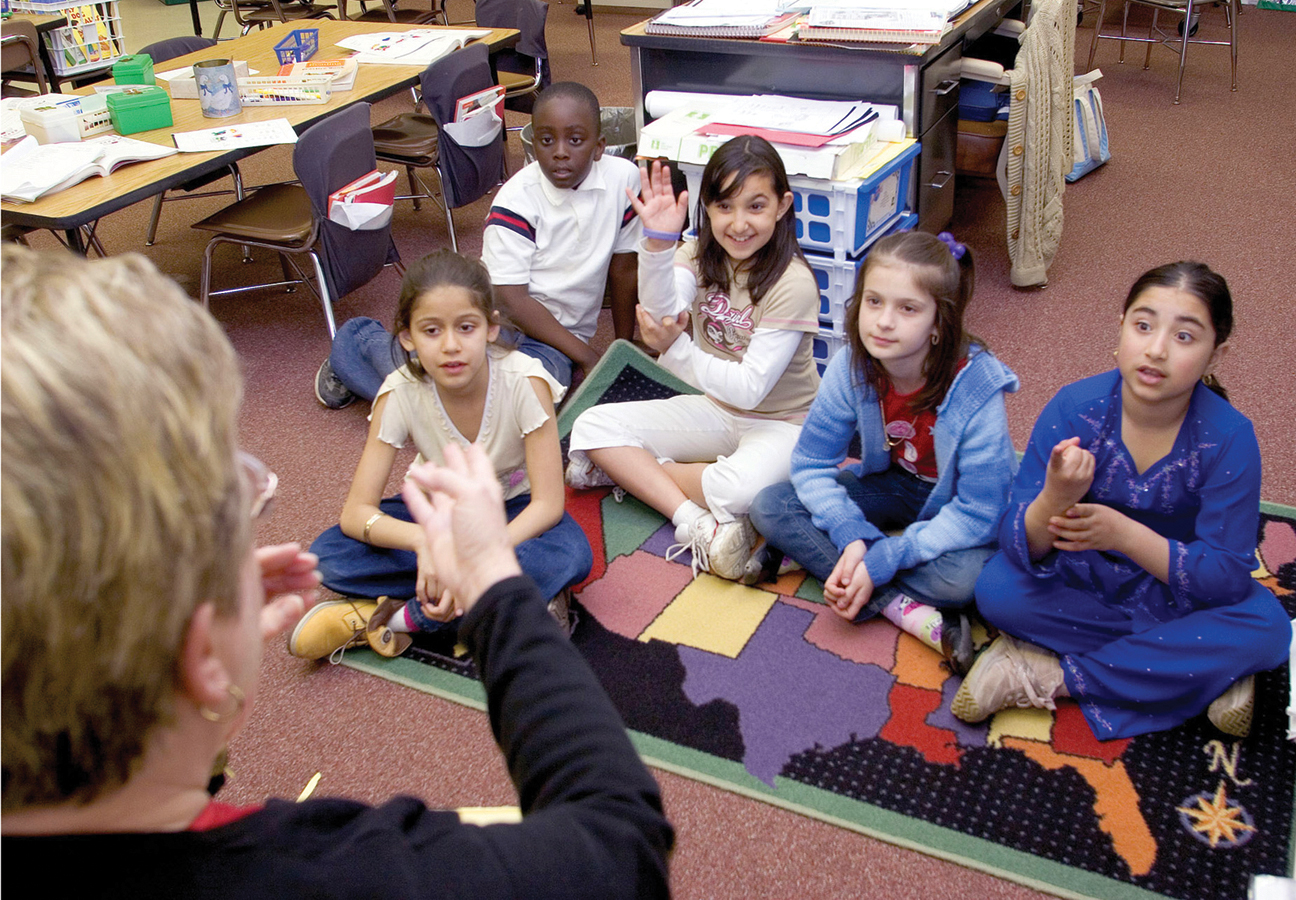7.3 Language Advances
By age 6, children have mastered the basic vocabulary and grammar of their first language. Many also speak a second language fluently. These linguistic abilities form a strong knowledge base, enabling some school-
Vocabulary
ESPECIALLY FOR Parents You have had an exhausting day but are setting out to buy groceries. Your 7-
Your son would understand your explanation, but you should take him along if you can do so without losing patience. While shopping, you can teach vocabulary (does he know pimientos, pepperoni, polenta?), categories (root vegetables, freshwater fish), and math (which size box of cereal is cheaper?). 
By age 6, children know the names of thousands of objects, and they use many parts of speech—
The humourist James Thurber remembered “the enchanted private world of [his] early boyhood”:

In this world, businessmen who phoned their wives to say they were tied up at the office sat roped to their swivel chairs, and probably gagged, unable to move or speak except somehow, miraculously, to telephone.…Then there was the man who left town under a cloud. Sometimes I saw him all wrapped up in the cloud and invisible.…At other times it floated, about the size of a sofa, above him wherever he went…[I remember] the old lady who was always up in the air, the husband who did not seem able to put his foot down, the man who lost his head during a fire but was still able to run out of the house yelling.
[Thurber, 1999]
Adults may not realize that some figures of speech, or even words, are culture-
Because school-
a jellyfish, which has a deadly sting and vicious bite and tentacles which could squeeze your throat and make your bronchioles get smaller and make breathing harder. Or like a boa constrictor squeezing life out of you.
[quoted in Peterson & Sterling, 2009]
That boy felt that he alone had to fight his disease, which he considered evil and dangerous—
266
Adjusting to the Context
One aspect of language that advances markedly in middle childhood is pragmatics, the practical use of language, which includes the ability to use words and other devices to communicate well with varied audiences in different contexts. As children master pragmatics, they become more adept in all domains.
Learning the CodesMastery of pragmatics allows children to change styles of speech, or “codes,” depending on their audience. Each code includes many aspects of language—

Children need instruction from teachers to become fluent in the formal code because the logic of grammar (whether who or whom is correct or when a sentence is incomplete) is almost impossible to deduce. Peers teach the informal code, with curses, slang, gestures, and alternate grammar.
Code changes are particularly obvious when children speak one language at home and another at school. Every nation includes many such children; most of the world’s 6000 languages are not school languages. In Canada, more than 200 languages were reported as the home or mother language in the 2011 census. Specifically, 20 percent of the Canadian population, or more than 6 million people, speak a home language other than English or French (Statistics Canada, 2012a). This includes more than 200 000 people who speak an Aboriginal language (Langlois & Turner, 2012). Similarly, English is the language of instruction in Australia, but 17 percent of Australian children speak one of 246 other languages at home (Centre for Community Child Health, 2009).
Learning Another LanguageThe questions of when, how, to whom, and even whether schools should provide second-
In some European countries, such as Sweden, Denmark, and the Netherlands, almost every child speaks two languages by age 10. In Africa, children who are talented and fortunate enough to reach high school often speak three languages. In Canada, about 15 percent of youths 15 to 19 years of age can speak both official languages. In the United States, less than 5 percent of children under age 11 study a language other than English in school (Robelen, 2011).

How do children learn a second language in school? One option is immersion, in which instruction occurs entirely in the new language. Another approach is the opposite: Teach in the children’s first language for several years, and then teach the second language as a foreign tongue. Between these extremes lies bilingual schooling, with instruction in two languages.
In North America, there are ESL (English as a second language) programs for students whose first language is not English. In these programs, non-
267
In middle childhood, children sometimes successfully master a second language and sometimes fail: The research is not clear as to which approach is best (Gandara & Rumberger, 2009). Success is affected by context: Home literacy (frequent reading, writing, and listening in any language), cultural values, national attitudes and policies, and the teacher’s warmth and skills all make a difference. Success is also affected by personality, ability, expectations, background, and SES.
KEY Points
- Language continues to develop rapidly during middle childhood.
- Because children are now more logical, they can understand metaphors, prefixes, suffixes, and formal codes.
- Social acceptance is crucial; pragmatics is evident as children learn the informal code.
- Children advance in two languages if motivation is high and instruction is individualized.